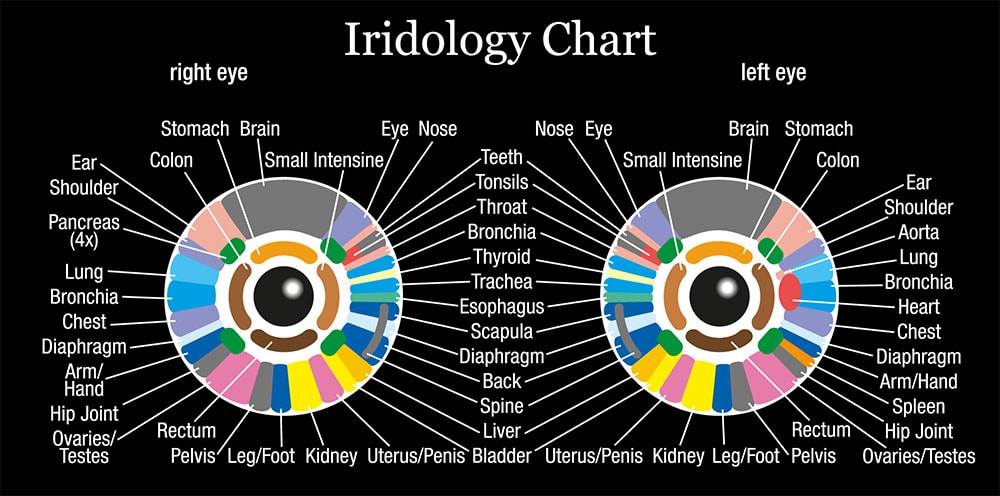Iridology: a window into your health

People say that eyes are the windows to the soul, but practitioners of iridology believe that they are something more than that. Iridology is an alternative medical practice in which the iridologist will study a patient’s iris – the coloured ring around the pupil – to gain an understanding of that person’s physical and psychological health. Iridologists – who are generally naturopaths or hold a similar qualification in holistic medicine – believe that nature has offered up diagnostic information about each person’s body within their eyes, and that through examination of the eyes that they are able to identify problem areas for a patient long before symptoms of ill health manifest.
When assessing a patient, an iridologist will use a torch and/or magnifying glass to examine the iris’ pigmented patterns and dots, the appearance of fine fibres called stroma, as well as also looking for tissue changes in the eye. The iridologist will usually reference special charts which show both the left and right iris divided up into approximately 90 sections, with each section corresponding to a different part of the body or psyche. Using all of this information, an iridologist will aim to determine a patient’s health issues past and present, as well as advise of any areas to watch out for or work on in the future.
Using the eyes to diagnose health issues began as early as 1665, but iridology in its present form was conceived by a Hungarian physician in the 19th century and then built upon by a Swedish man who suffered major ill health and who then, after a course of medication, noticed dramatic changes in his irises. Iridology was more widely popularised by an American chiropractor named Bernard Jensen who taught classes on the practice in the 1950s, thereby introducing its benefits to many more people.
Scientific research in similar areas has continued, and as recently as 2007 new research was published by a Swedish psychology graduate who has found that characteristics of the iris may indeed reflect an individual’s personality. Mats Larsson studied the ‘furrows’ and ‘crypts’ of 428 volunteers’ eyes as well as administering a personality test. He concluded that those with distinct and long furrows – circular lines around the outer edge of the iris – were more prone to neuroticism and impulsivity, whereas the volunteers with the least crypts – squiggly lines jetting out away from the pupil – were in general warmhearted, trusting and positive people. Larsson attributes this correlation to the fact that brain and eye development are closely tied in the womb.

